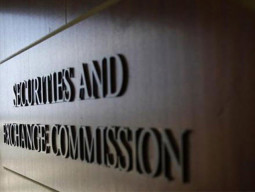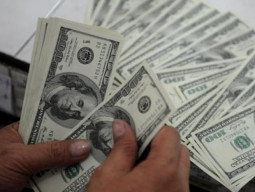
In November 2008 when Pakistan once again entered a Stand-By arrangement with IMF, the programme’s primary target was “significant reduction in fiscal deficit” which was to be achieved by tax reforms and phasing out subsidies. Pakistan abides by the power sector reforms only to the extent that electricity bills have almost doubled since 2008. But when it comes to tax reforms, no progress has yet been made. The government’s efforts to implement VAT (later renamed as RGST) was so strongly opposed that at least for the time being it has been postponed indefinitely. And the last increase in petroleum prices was also withdrawn.
Apparently opposition parties and some allies of the government have scored political points on the issues in an effort to make people feel that they do address the concerns of a common man.
The fact is however that the government invariably has to increase resources. In the absence of RGST/VAT implementation and subsidy withdrawal the only option government is left with is taking loans from the banking (central and commercial) and non-banking sector. Deficit financing from the internal non-central banking sources has repercussions in the form of lesser credit available to private sector thereby hindering growth and GDP targets. Also these loans have to be repaid with mark-up so ultimately resumption to central bank becomes indispensable if revenues are not topped up.
Economists have elaborated how inflation which emerges from printing notes (borrowing from central banking) is equal to taxing the public. This is because inflation erodes peoples’ real income just like the tax leaves people with lesser disposable income. Now we have two choices either to tax people in the name of taxes or rob them of their purchasing power by printing notes.
In the following part of this article we will discuss the merits and demerits of the two strategies.
RGST is being opposed on the basis that it will cause an increase in prices. But the non-implementation of taxes will inevitably end in a general price level increase as well . The difference between the two levies, one in the form of RGST/VAT and other through note printing tool, is that the former will impact selected segments of the society and economy while the latter will affect all the people blindly. Through RGST we can give concession to poor and deserving segments of the society. We can select which sector to burden and to what extent. We can make a difference between the haves and have-nots.
But if we opt to levy ‘inflation tax’ it would not be a wise decision. Inflation hurts investors’ confidence, brings uncertainty into the business environment and causes greater fluctuations in the value of currency.
Properly applied taxes on the other hand remove uncertainty. Taxes have a self adjustment characteristic that they increase with the increase in the power of payers. That is if consumption increases, the tax revenue increases and vice versa.
The success of our pressure groups will not be to hold RGST in abeyance but to bring current double digit inflation to single digit. RGST should not be propagated as an inflationary tool rather it should be branded as a tax that is applied on consumption.
Some Pakistanis consider international aid to their country as a matter of right. Loss of billions of dollar to the country for playing the role of front line state in the war against terrorism is deemed enough to demand more and more concessions, grants and reliefs as indemnity. The reality that impedes any such expectation to come true is the economy of countries fighting this expensive war. Already surrounded by high unemployment and lesser funds available for social benefits these countries cannot be expected to continue to extend financial assistance to Pakistan indefinitely. Pakistan has to rely on its own resources for coming out of the current economic turmoil by deepening and broadening tax base. And the sooner this fact is realised the better is it.
the writer can be contacted at economistfaisal@gmail.com
Published in The Express Tribune, February 14th, 2011.






1726054615-0/OpenAI-(2)1726054615-0-270x192.webp)











COMMENTS
Comments are moderated and generally will be posted if they are on-topic and not abusive.
For more information, please see our Comments FAQ